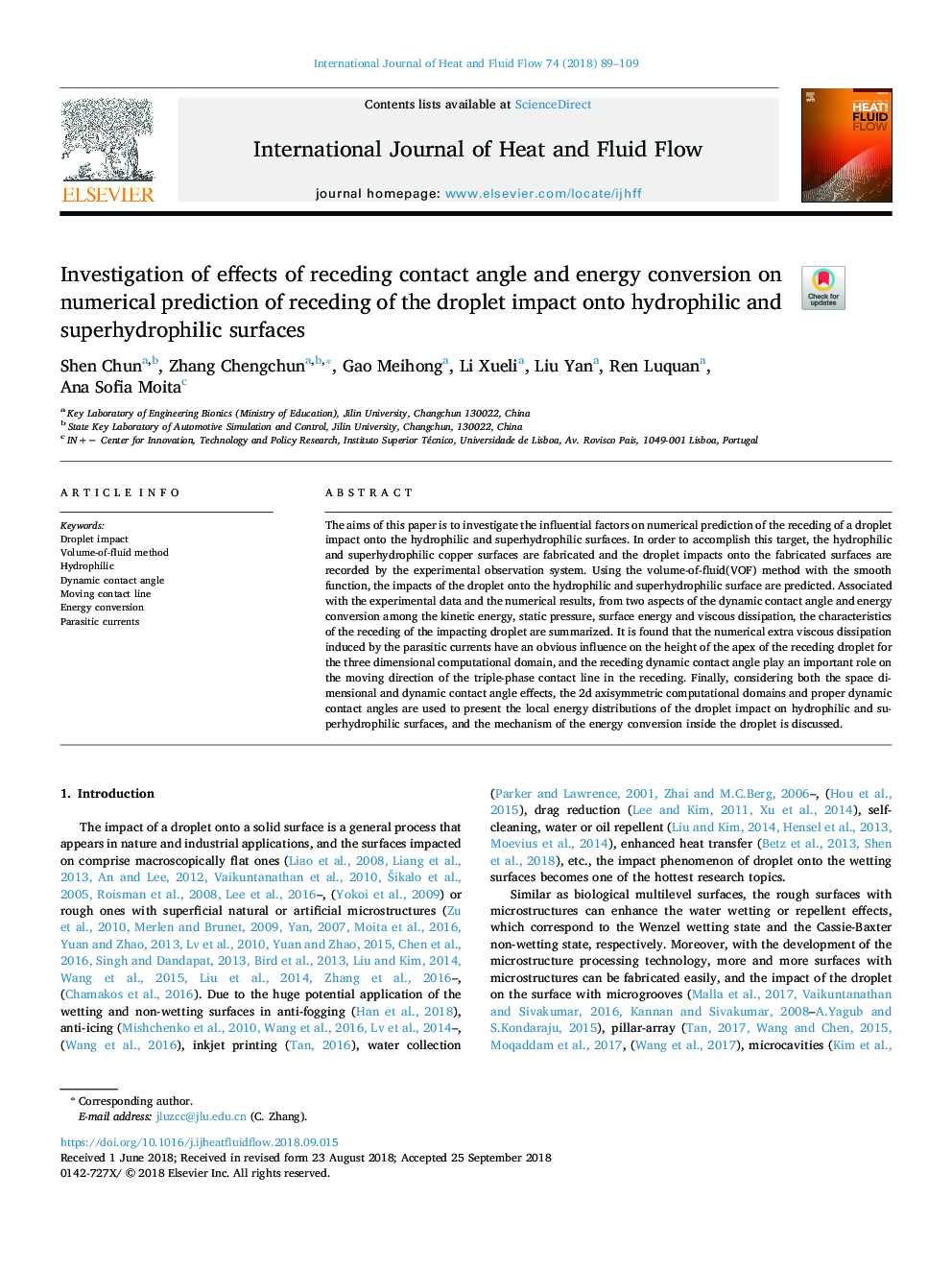| Article ID | Journal | Published Year | Pages | File Type |
|---|---|---|---|---|
| 11023689 | International Journal of Heat and Fluid Flow | 2018 | 21 Pages |
Abstract
The aims of this paper is to investigate the influential factors on numerical prediction of the receding of a droplet impact onto the hydrophilic and superhydrophilic surfaces. In order to accomplish this target, the hydrophilic and superhydrophilic copper surfaces are fabricated and the droplet impacts onto the fabricated surfaces are recorded by the experimental observation system. Using the volume-of-fluid(VOF) method with the smooth function, the impacts of the droplet onto the hydrophilic and superhydrophilic surface are predicted. Associated with the experimental data and the numerical results, from two aspects of the dynamic contact angle and energy conversion among the kinetic energy, static pressure, surface energy and viscous dissipation, the characteristics of the receding of the impacting droplet are summarized. It is found that the numerical extra viscous dissipation induced by the parasitic currents have an obvious influence on the height of the apex of the receding droplet for the three dimensional computational domain, and the receding dynamic contact angle play an important role on the moving direction of the triple-phase contact line in the receding. Finally, considering both the space dimensional and dynamic contact angle effects, the 2d axisymmetric computational domains and proper dynamic contact angles are used to present the local energy distributions of the droplet impact on hydrophilic and superhydrophilic surfaces, and the mechanism of the energy conversion inside the droplet is discussed.
Keywords
Related Topics
Physical Sciences and Engineering
Chemical Engineering
Fluid Flow and Transfer Processes
Authors
Shen Chun, Zhang Chengchun, Gao Meihong, Li Xueli, Liu Yan, Ren Luquan, Ana Sofia Moita,
